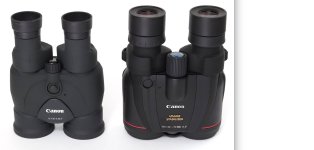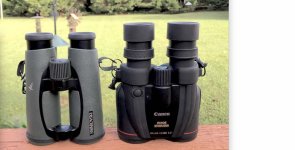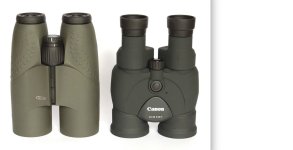John A Roberts
Well-known member

Roger has just posted a review of Canon's top of the range IS model the 10x42 L, at: Canon 10x42IS Review
(thanks to William Lewis for the heads-up)

It complements his reviews of other Canon IS models: the 10x30; 12x36 II and III; 14x32; 15x50, and; 18x50.
See at: Binocular Reviews
In general, the added electronics and mechanicals tend to make an IS binocular around 'one size larger and heavier' than otherwise
e.g. the 30 oz Swarovski EL SV 10x42 (not a small x42) and the the 40 oz Canon 10x42 IS:

From Chuck, in post #3 at: swarovision 10x42 vs canon 10x42 is
And also for visual comparison, the Meopta 12x50 HD and the Canon 12x36 IS III:

From Roger’s review of the 12x36 IS III.
John
(thanks to William Lewis for the heads-up)

It complements his reviews of other Canon IS models: the 10x30; 12x36 II and III; 14x32; 15x50, and; 18x50.
See at: Binocular Reviews
In general, the added electronics and mechanicals tend to make an IS binocular around 'one size larger and heavier' than otherwise
e.g. the 30 oz Swarovski EL SV 10x42 (not a small x42) and the the 40 oz Canon 10x42 IS:

From Chuck, in post #3 at: swarovision 10x42 vs canon 10x42 is
And also for visual comparison, the Meopta 12x50 HD and the Canon 12x36 IS III:

From Roger’s review of the 12x36 IS III.
John







